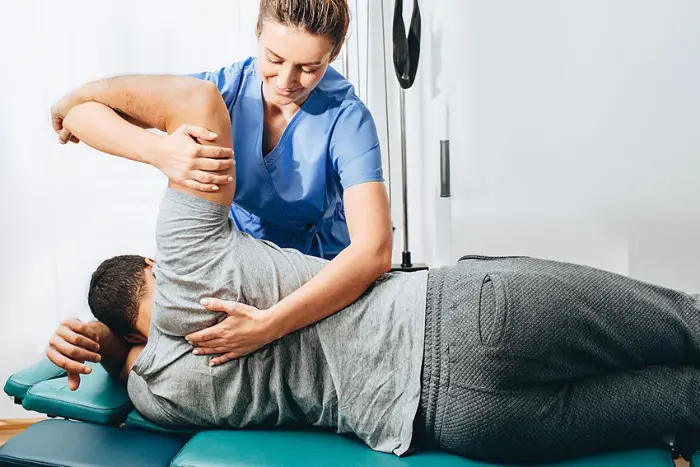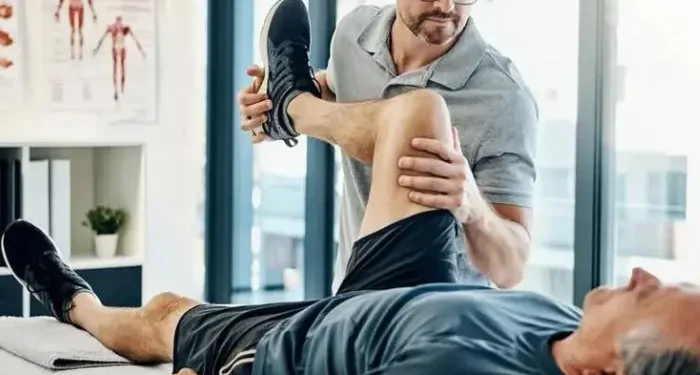Between any two of the 26 bones that make up your spinal column, there is a flexible, rubbery structure called an intervertebral disc. These discs work as shock absorbers for your vertebrae. A herniated disc is one of the most common causes of back pain. Research has shown that physical therapy Durham NC can be at least as effective as surgery at treating a herniated disc.
Pathology of a Herniated Disc
Each intervertebral disc consists of two layers. The tough, rubbery outer layer called the annulus surrounds the soft, gel-like inner layer called the nucleus pulposus. Damage to the annulus can occur all at once due to a traumatic injury or gradually over time. In either case, a rupture of the annulus can allow the nucleus pulposus to leak out.
When you have a herniated disc, the gel-like material of the nucleus pulposus can spill out into the canal for the spinal cord. There isn’t much room in the spinal canal, so a herniated disc may crowd the spinal cord and put pressure on it.
Symptoms of a Herniated Disc
Symptoms of a herniated disc depend on where it occurs and whether it is putting pressure on the spinal cord. Herniated discs are most common in the cervical spine or the lumbar spine. If your pain is in your neck, you probably have a herniated disc in the cervical spine. If your pain is in the low back, you probably have a lumbar herniated disc. A therapist at a physical therapy clinic may be able to confirm whether you have a disc herniation and at what level.
Herniated discs usually cause pain. If the herniation also puts pressure on the spinal cord, you may also notice numbness and tingling in your limbs. A herniated disc in your low back can cause sensation changes in your legs. If the symptoms are in your arms, you probably have a herniated disc in your cervical spine.
How Physical Therapy Treatment Can Help?
If you have a confirmed diagnosis of a herniated disc, or even if you just suspect it, here are five reasons why you should be asking yourself, “Where can I go to physical therapy near me?”

1. Return to Activities
When you start physical therapy, your therapist will ask you what you hope to achieve by the end of your treatment course. The therapist will then design a program specifically to help you achieve those goals.
2. Reduce Pain
Your therapist may use iontophoresis and other pain relief modalities to improve your symptoms. You may also learn to modify your activities to allow your injury to heal and prevent it from happening again.
3. Improve Posture
Poor posture can put pressure on a herniated disc. Your physical therapist can help you improve your posture to relieve that pressure.
4. Improve Strength
Pain from a herniated disc can prevent you from moving as much as you used to. Muscle atrophy can be the result. Your therapist can teach you exercises to restore your core strength.
5. Improve Flexibility
Chronic pain and reduced activity can also cause muscles to become tight. Your therapist can teach you stretching exercises to help your muscles become more supple.
Look specifically for a therapist who specializes in treating disc herniation.








